Synapses and Neurotransmitters II
1/18
There's no tags or description
Looks like no tags are added yet.
Name | Mastery | Learn | Test | Matching | Spaced |
|---|
No study sessions yet.
19 Terms
What are the two ionotropic receptors that Glutamate binds to?
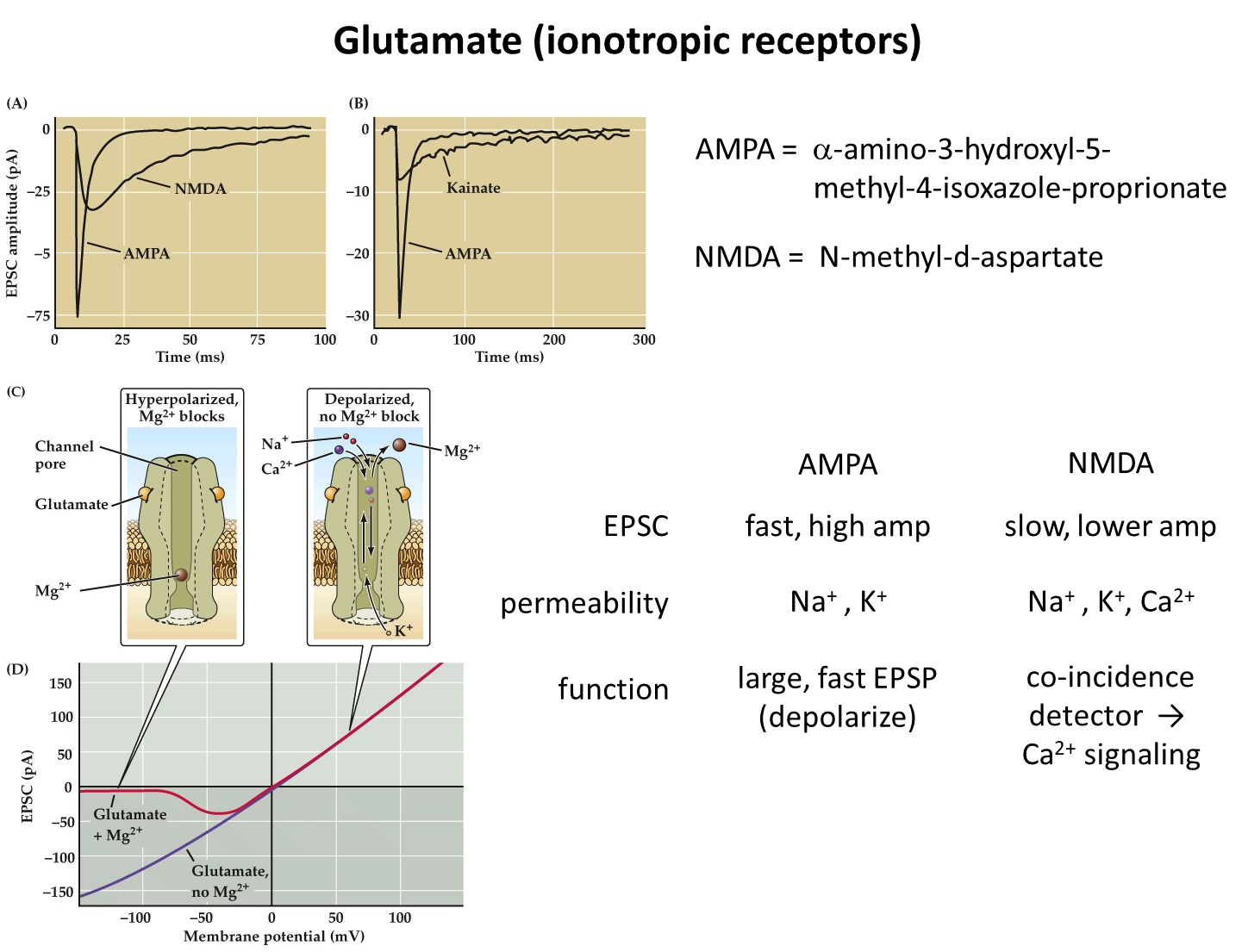
AMPA and NMDA
1) AMPA is used in rapid fast excitatory neurotransmission in the central nervous system
→ causes a large fast depolarization by causing changes in permeability in sodium and potassium
2) NMDA is used in slow lower amplitude excitatory neurotransmission
→ causes a change in permeability in sodium, potassium, and calcium
→ act as co-incidence detector where two conditions need to occur in order for it to activate: glutamate binding along with prior postsynaptic depolarization that removes the magnesium from blocking the channel pore
What is GABA and what are its two receptors? What are they associated with?
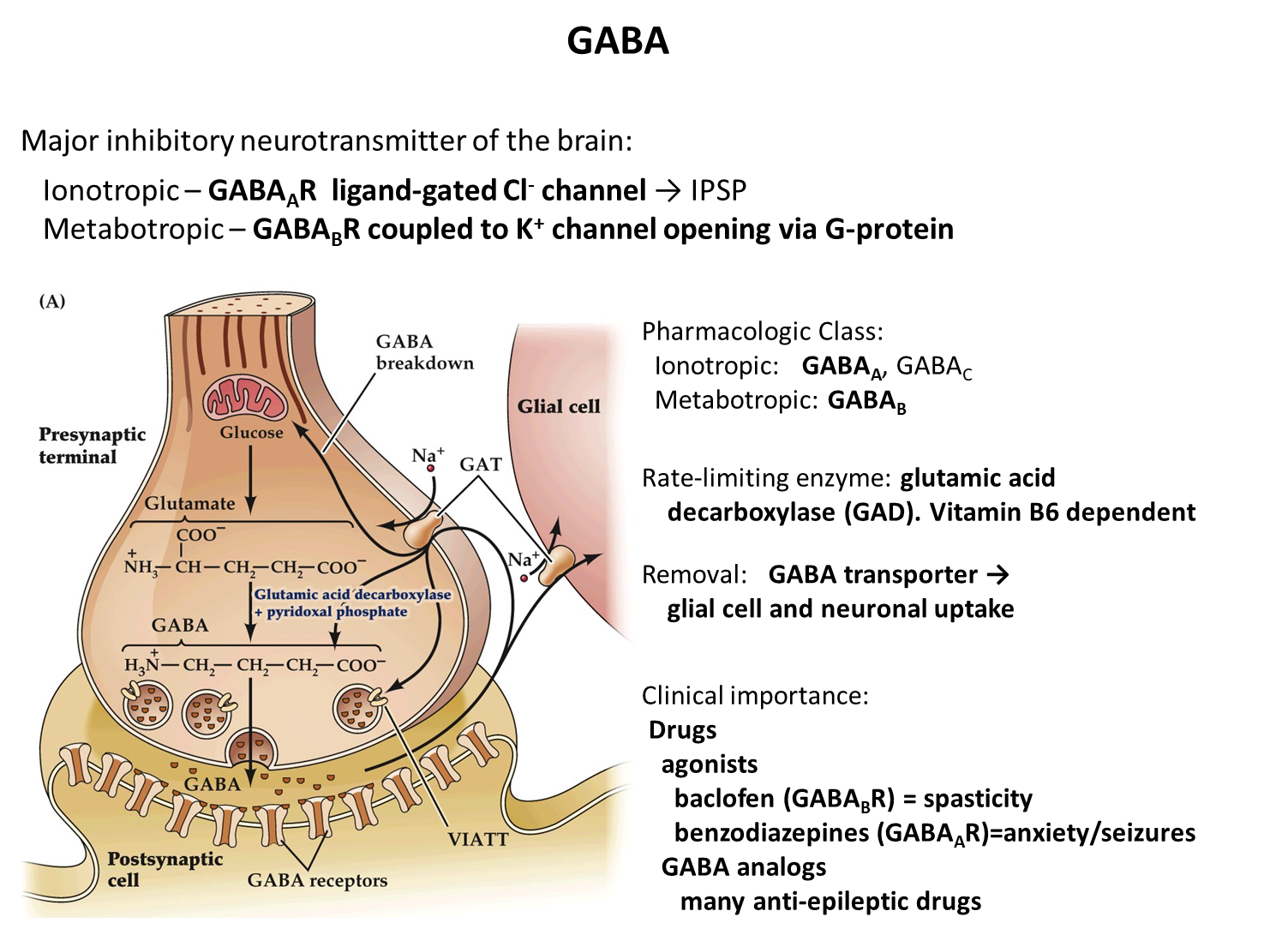
GABA is the major inhibitory neurotransmitter of the brain by binding to GABA-A and GABA-B receptors
1) Ionotropic - GABA-A is a chloride channel
→ GABA-A is capable of binding to drugs such as benzodiazapines and barbituates leading to inhibitory effects on the brain
2) Metabotropic - GABA-B is a potassium channel opening via G-protein activity
→ baclofen and hydroxybutyrate can bind to these receptors
What are the rate limiting enzymes, removal and clinical importance of GABA
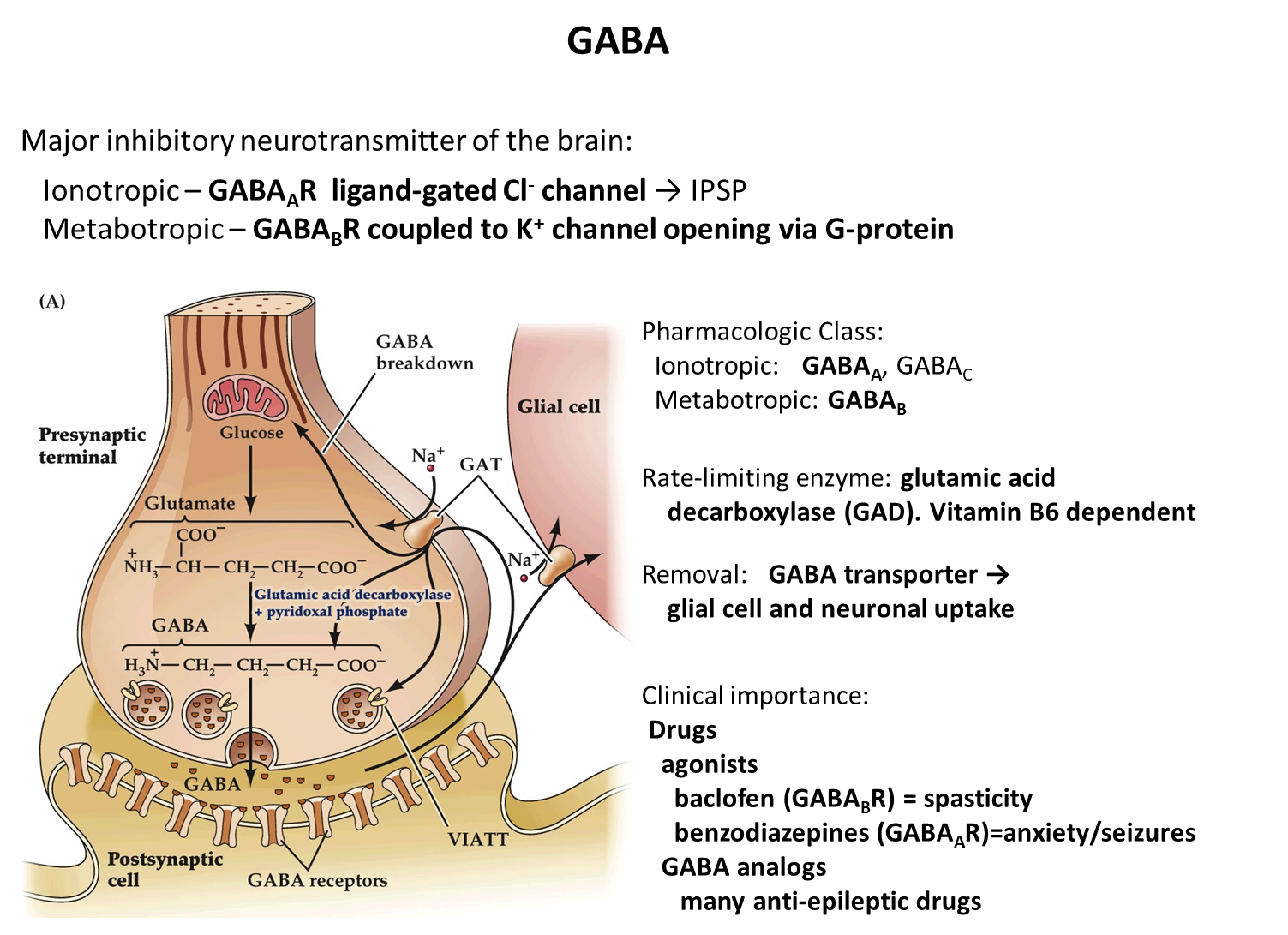
1) GABA is created via the activity of glutamic acid decarboxylase which is an enzyme that is dependent on Vitamin B6 or pyridoxine
→ glutamate converted to GABA
2) GABA is removed from the cleft via the GABA transporter into glial cells and via neuronal uptake
3) Agonists for GABA receptors are used to treat overactivity and anxiety/seizures
How does the reversal potential for chloride change with age
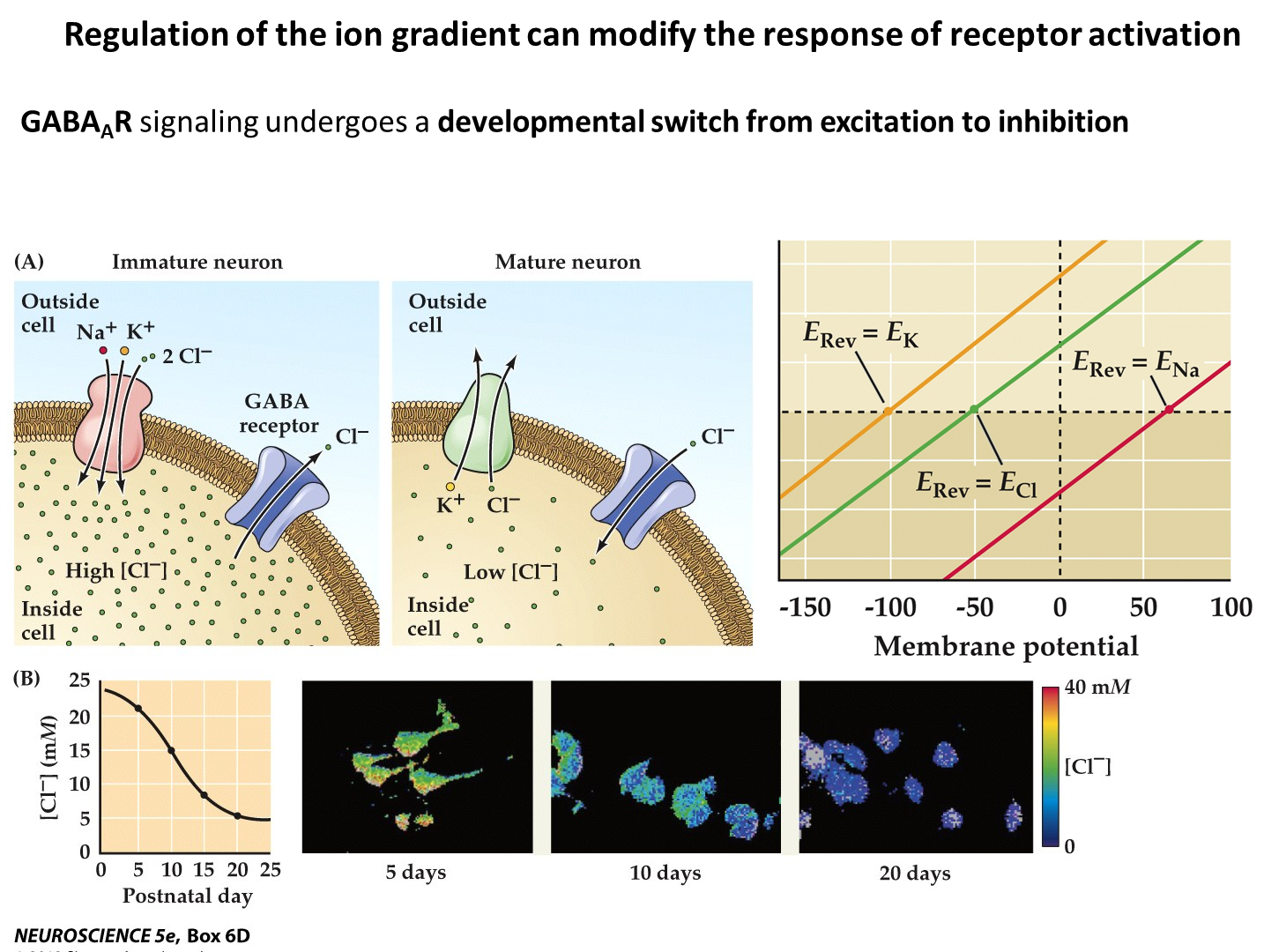
When you are born, there is a higher amount of chloride inside the cell than on the outside
→ this means that the reversal potential is high for chloride and causes depolarization when GABA channels open
As you age, the gradient changes and there is more chloride outside of the cell than inside
→ this makes the reverse potential negative and causes hyperpolarization when GABA channels open instead
What is Glycine (Class, RLE, Removal, Clinical Importance)
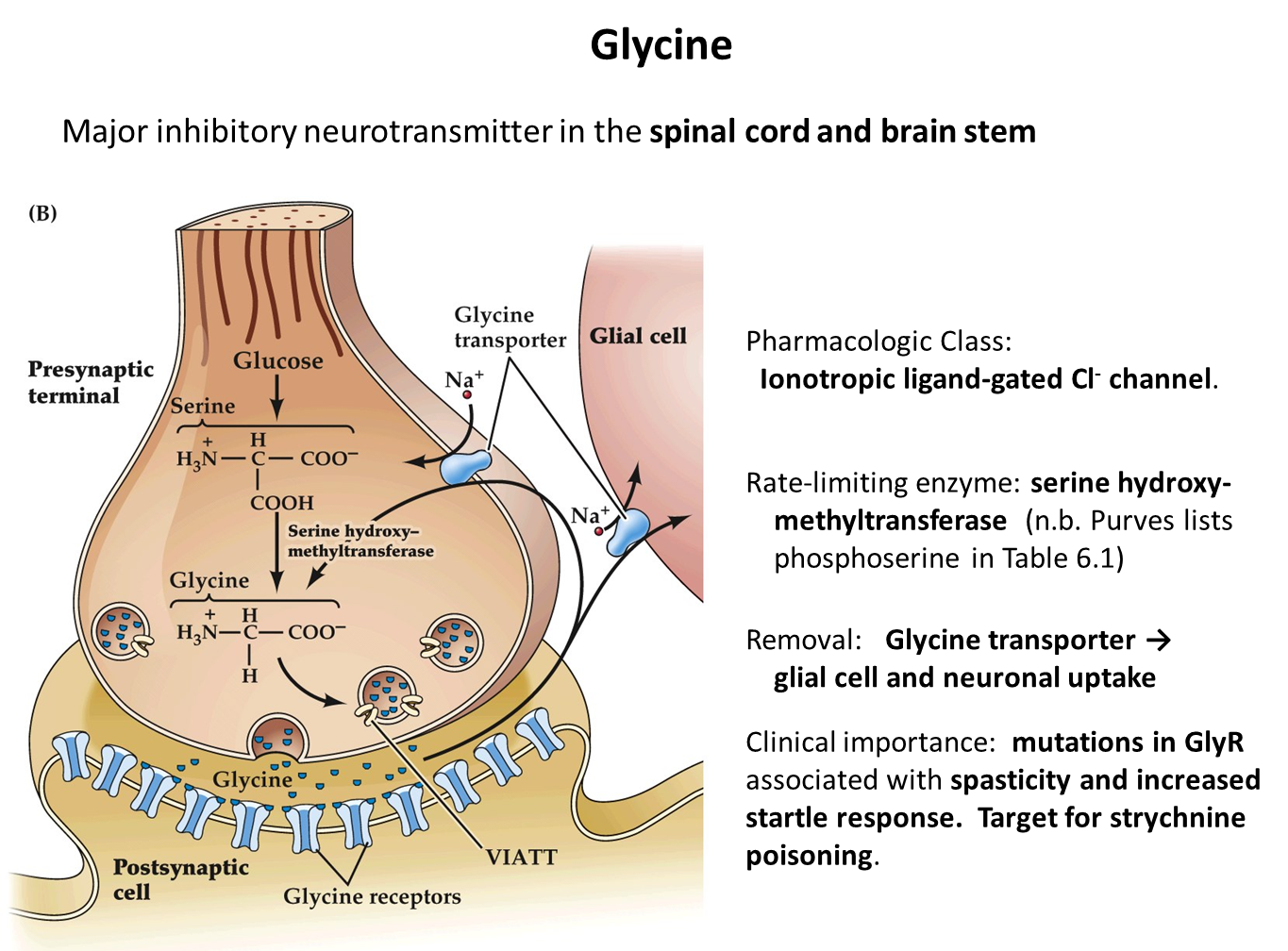
Glycine is the major inhibitory neurotransmitter in the spinal cord and brain stem
1) Glycine is created from serine hydroxymethyltransferase which will then bind to a ionotropic ligand gated chloride channel
→ following binding it is removed via a glycine transporter into glial cells and neurons
2) Mutations in Glycine receptors are associated with spasticity and increased startle response
How is Glutamate recycled?
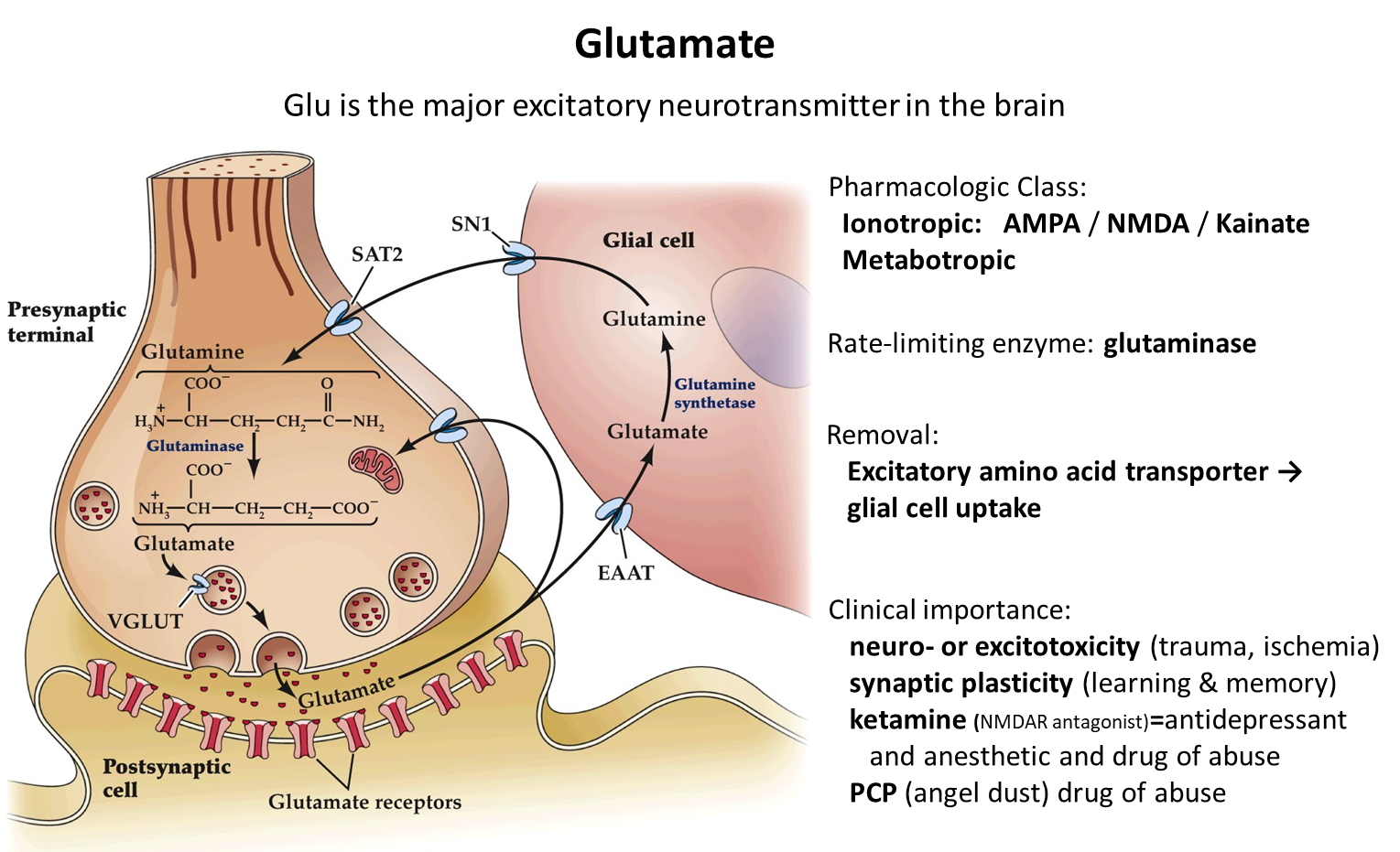
Glutamate when it is removed is converted back into glutamine in glial cells before being sent back to the neuron for conversion back to glutamate
→ this occurs because glutamate is excitatory and would cause issues if sent directly back out
What are Biogenic Amines (receptor, RLE, and removal)
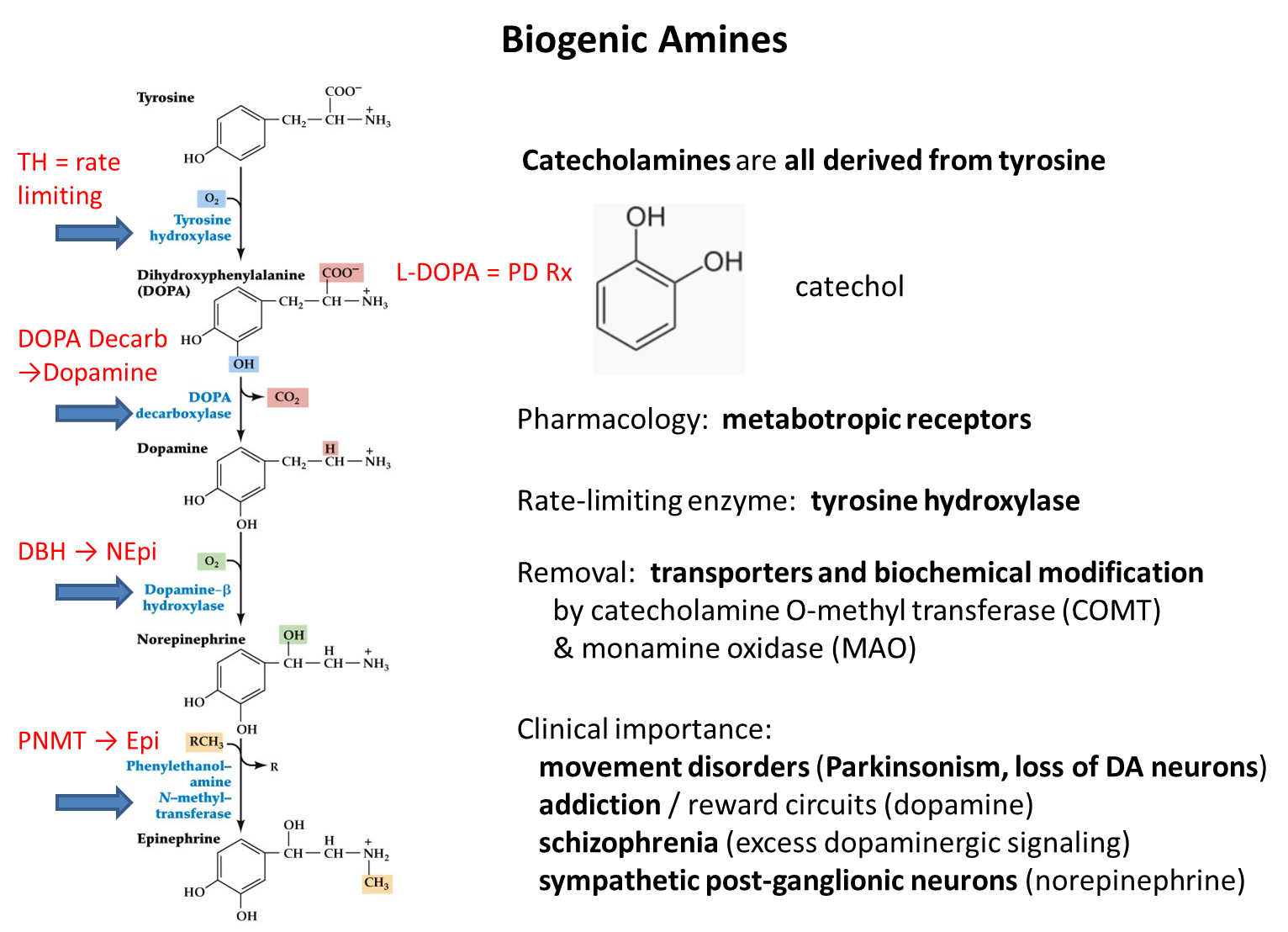
Biogenic Amines are catecholamines derived from tyrosine: DOPA, dopamine, norepinephrine, and epinephrine
1) Catecholamines are made via the action of tyrosine hydroxylase
→ These catecholamines are released and bind to G-protein receptors or metabotropic receptors
→ they are then removed via transporters and biochemical modification by Catecholamine O-methyltransferase (COMT) and monoamine oxidase (MOA)
What is Serotonin? (RLE, Receptor, and Removal)
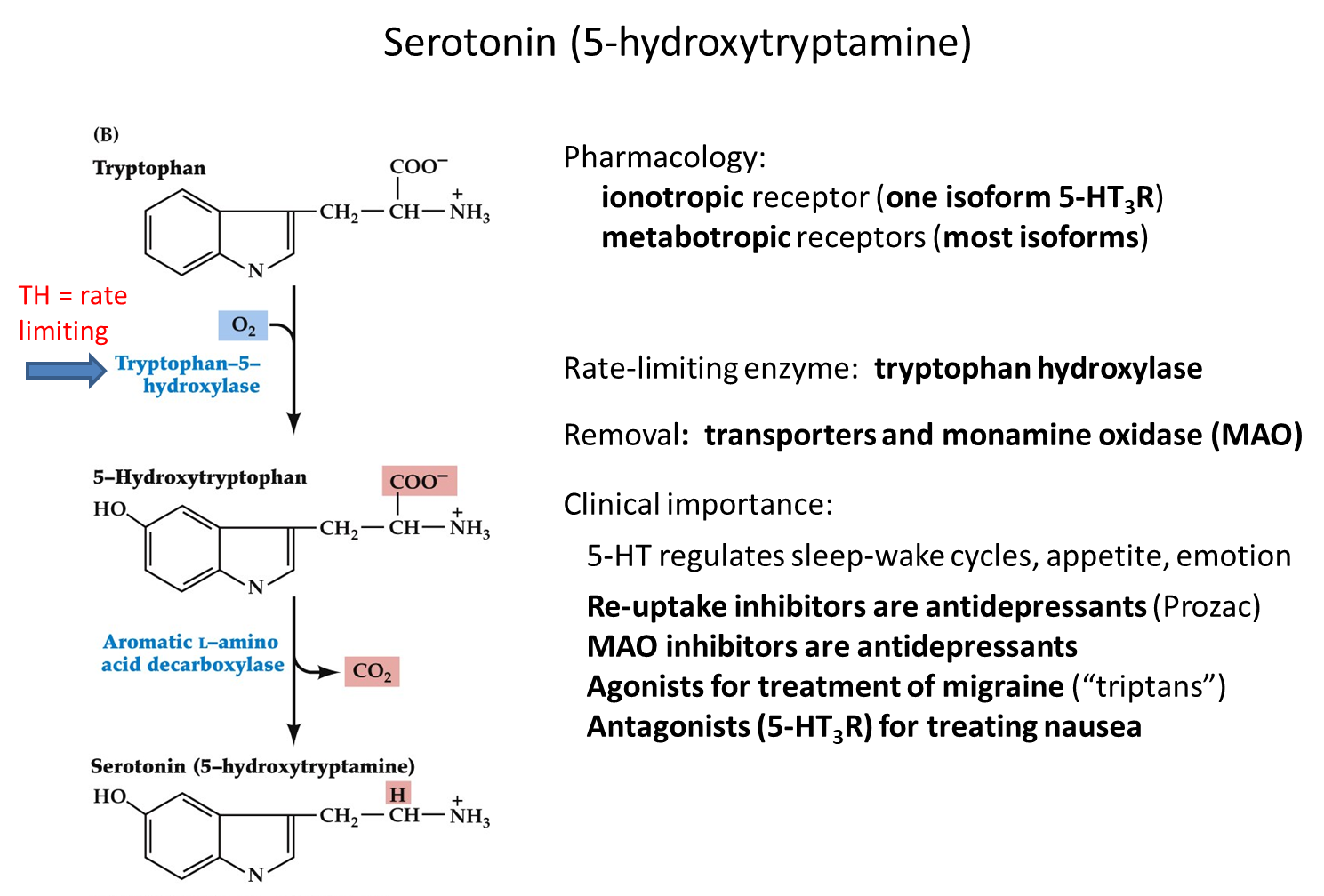
Serotonin is a monogenic amine
1) Made via the activity of tryptophan hydroxylase where it will bind to ionotropic receptors (ie: 5HT3R) or metabotropic receptors (the majority are G-protein)
→ removed via monoamine oxidase and transporters
Where does dopamine originate and project?
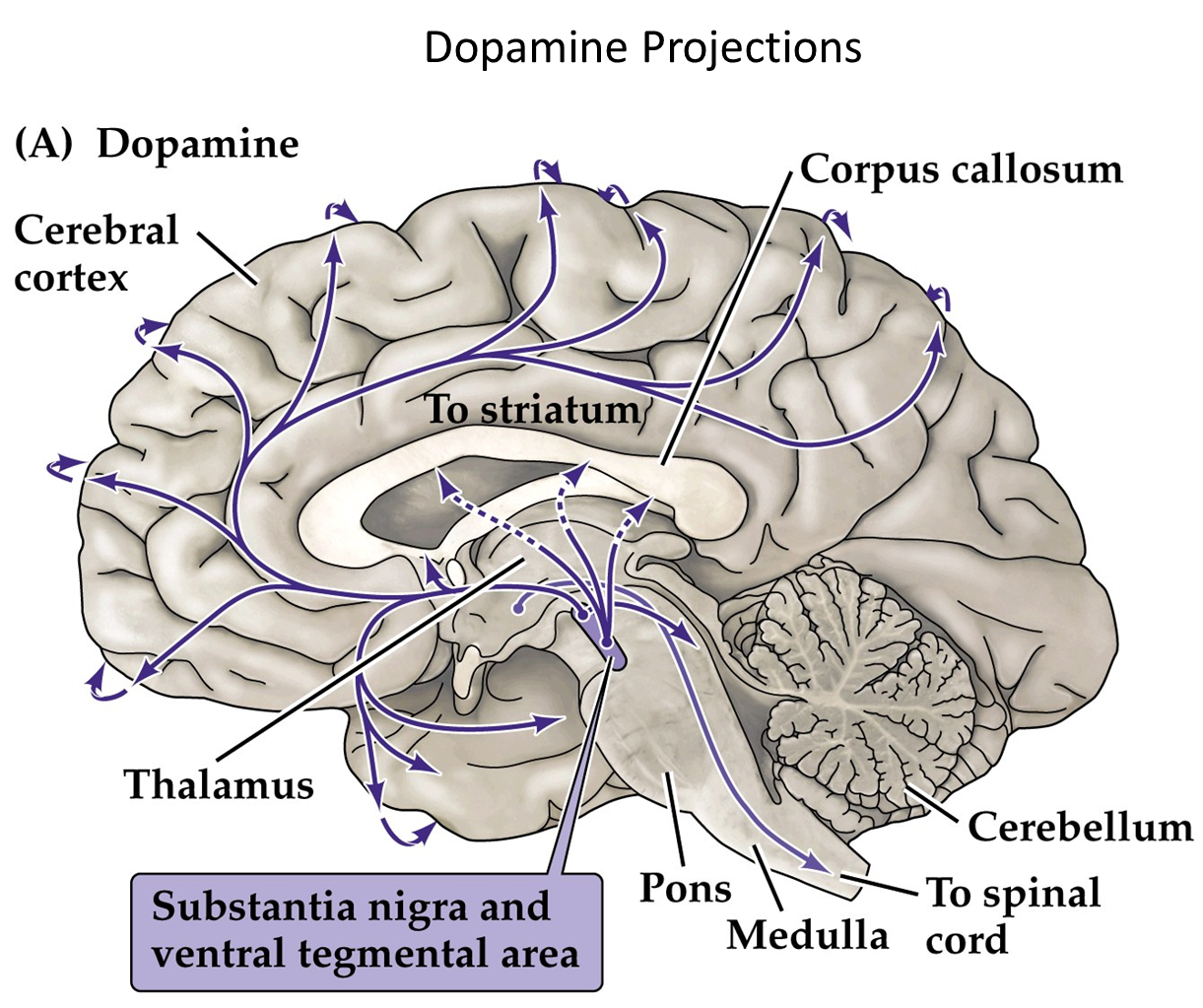
Originates in the substantia nigra and ventral tegmental area
→ goes to the striatum, cerebral cortex, thalamus, and spinal cord
Where does serotonin originate and project?
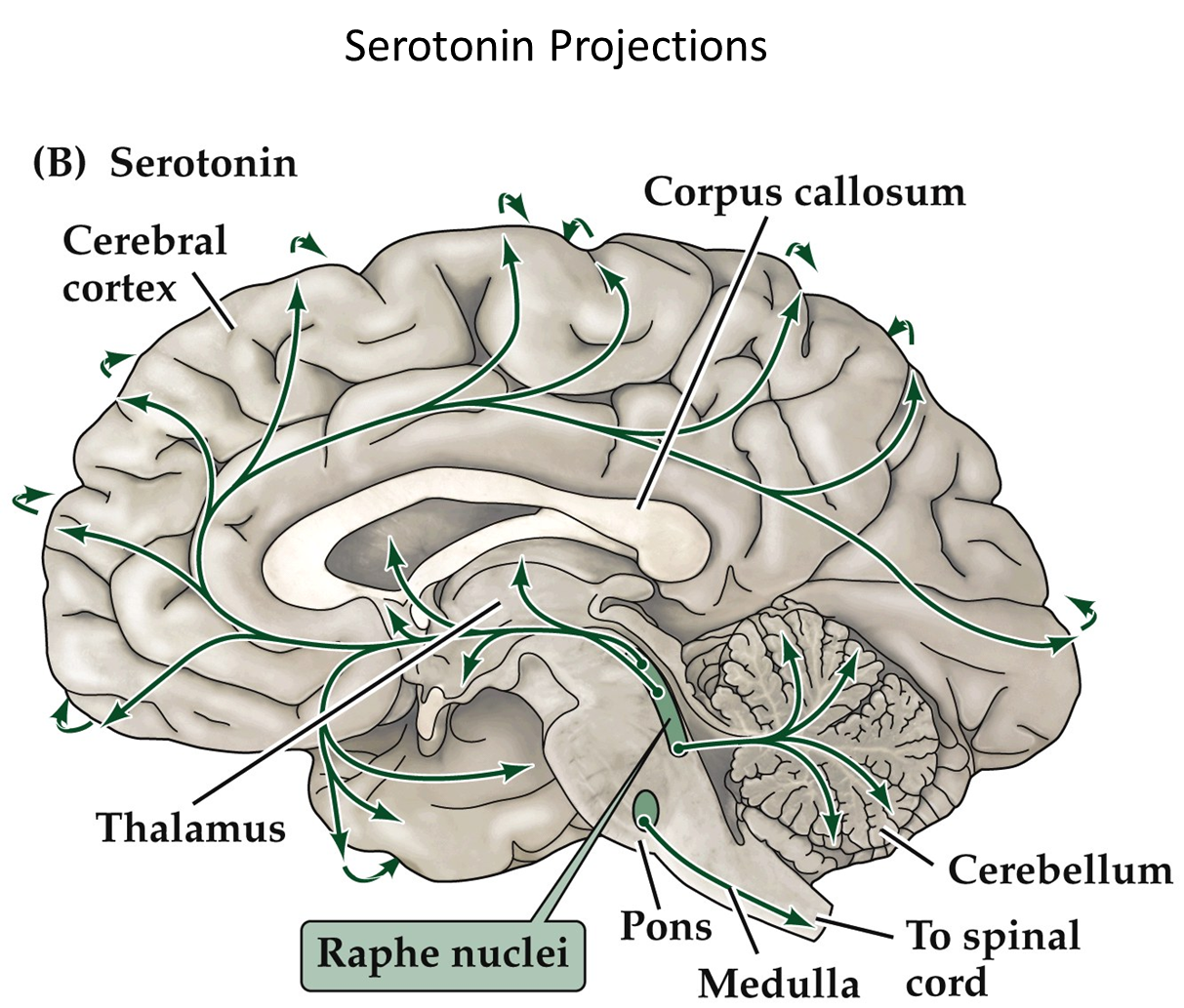
Produced in the raphe nuclei
→ goes to the cerebellum, spinal cord, thalamus, cerebral cortex
What is Synaptic Plasticity?
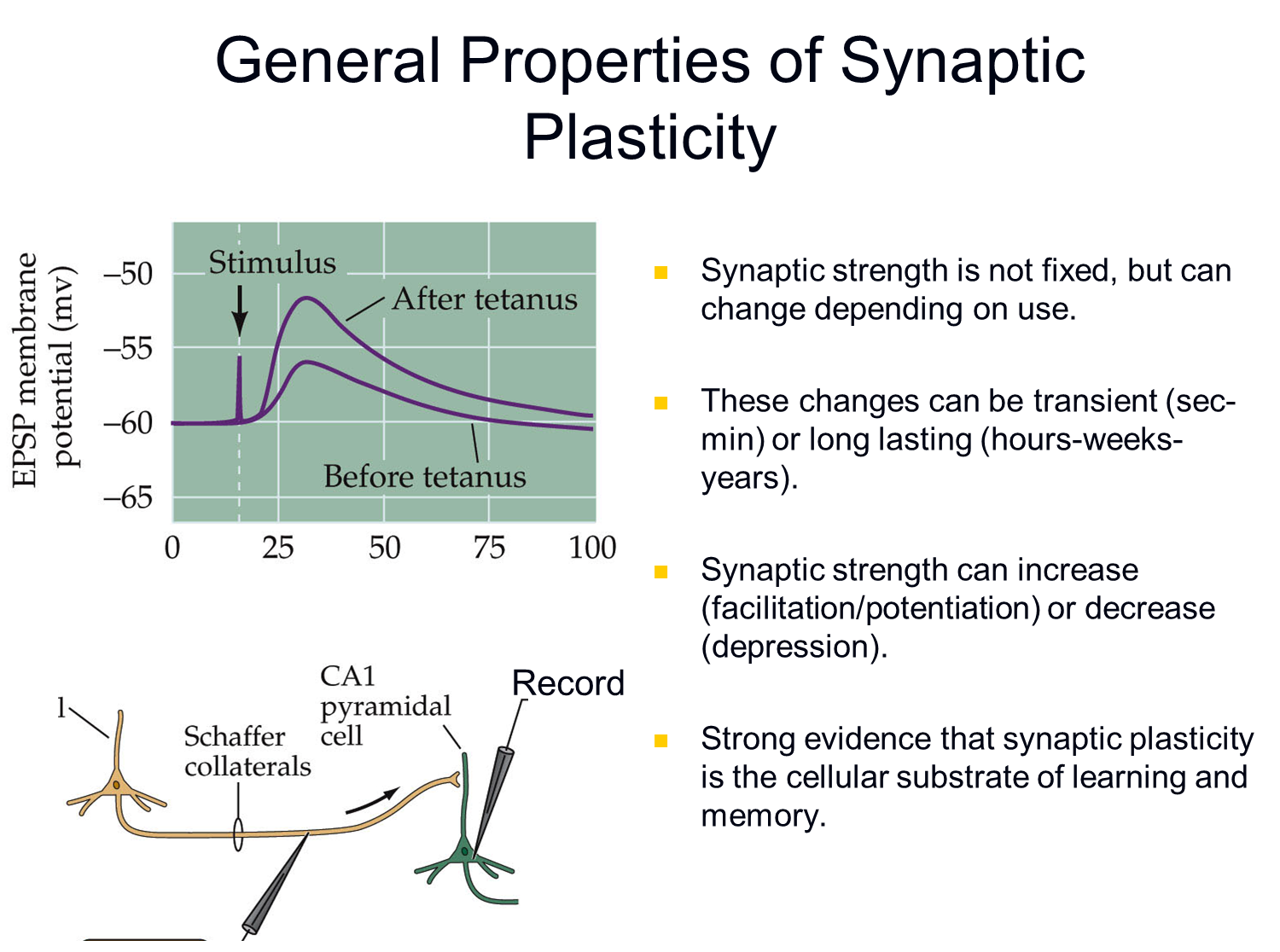
Synaptic Plasticity is the ability of the nervous system to change the strength or efficiency of synaptic transmission in response to neuronal activity. Can be either short term or long term
1) Short Term Plasticity comes in three types and is used in sensory adaptation such as desensitization
→ Facilitation
→ Depression
→ Post Tetanic Potentiation
2) Long Term
What is Facilitation?

Facilitation is a form of short term plasticity where successive action potentials cause an increased neurotransmitter release
1) when you very rapidly follow one action potential with another, the second post-synaptic action potential results in a larger depolarization
2) this occurs due to residual calcium from the first action potential being left over from the first stimulation before it can be reuptaken
→ this results in a larger amount of neurotransmitter released
What is Short Term Depression
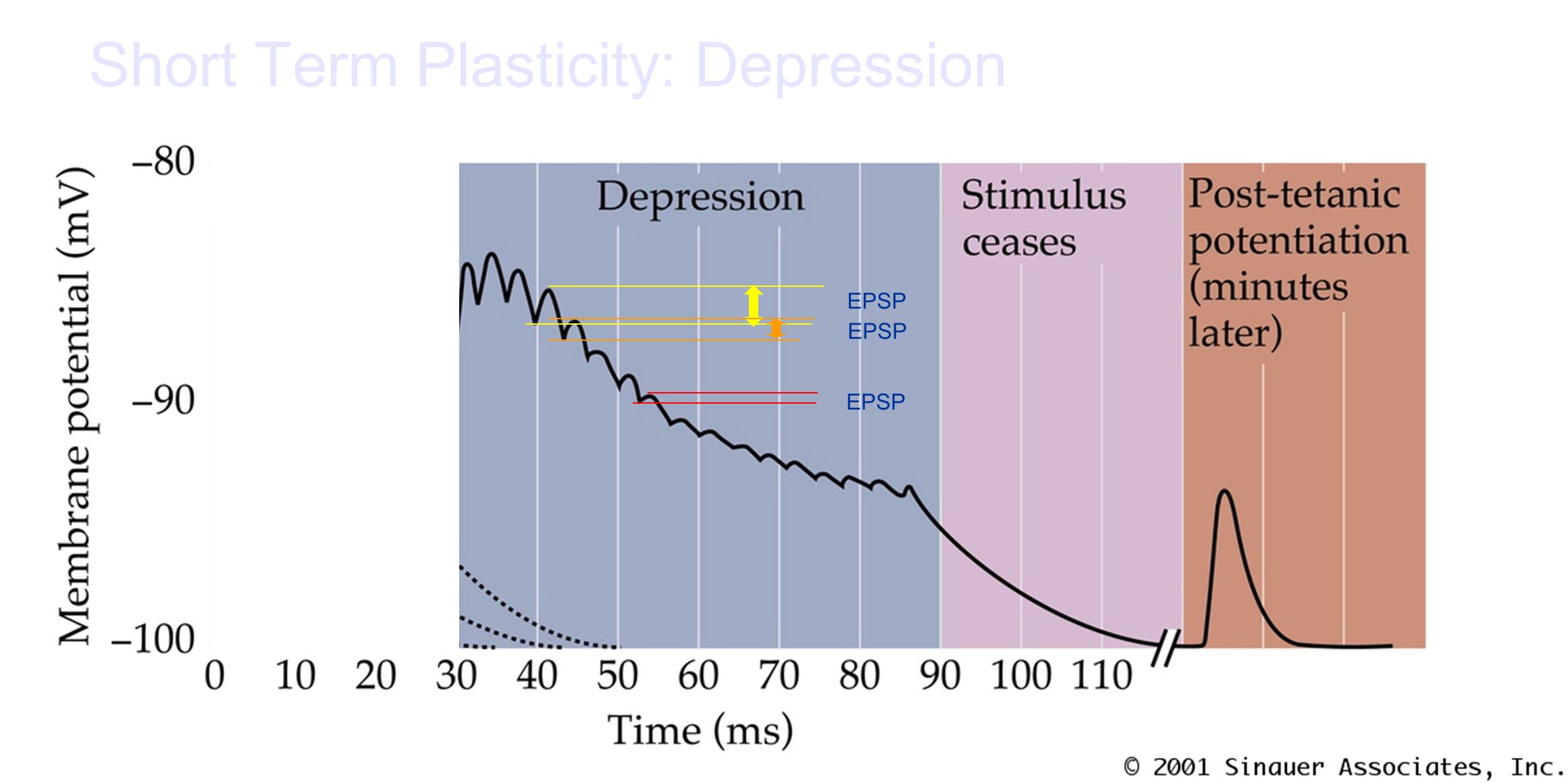
Depression is a form of short term plasticity where repeated stimulation leads to less neurotransmitter release
1) This occurs due to depletion of vesicles in the presynaptic terminal causing a temporary weakening of the response in the post-synaptic response
2) needs seconds in order to regenerate vesicles
What is Post-Tetanic Potentiation
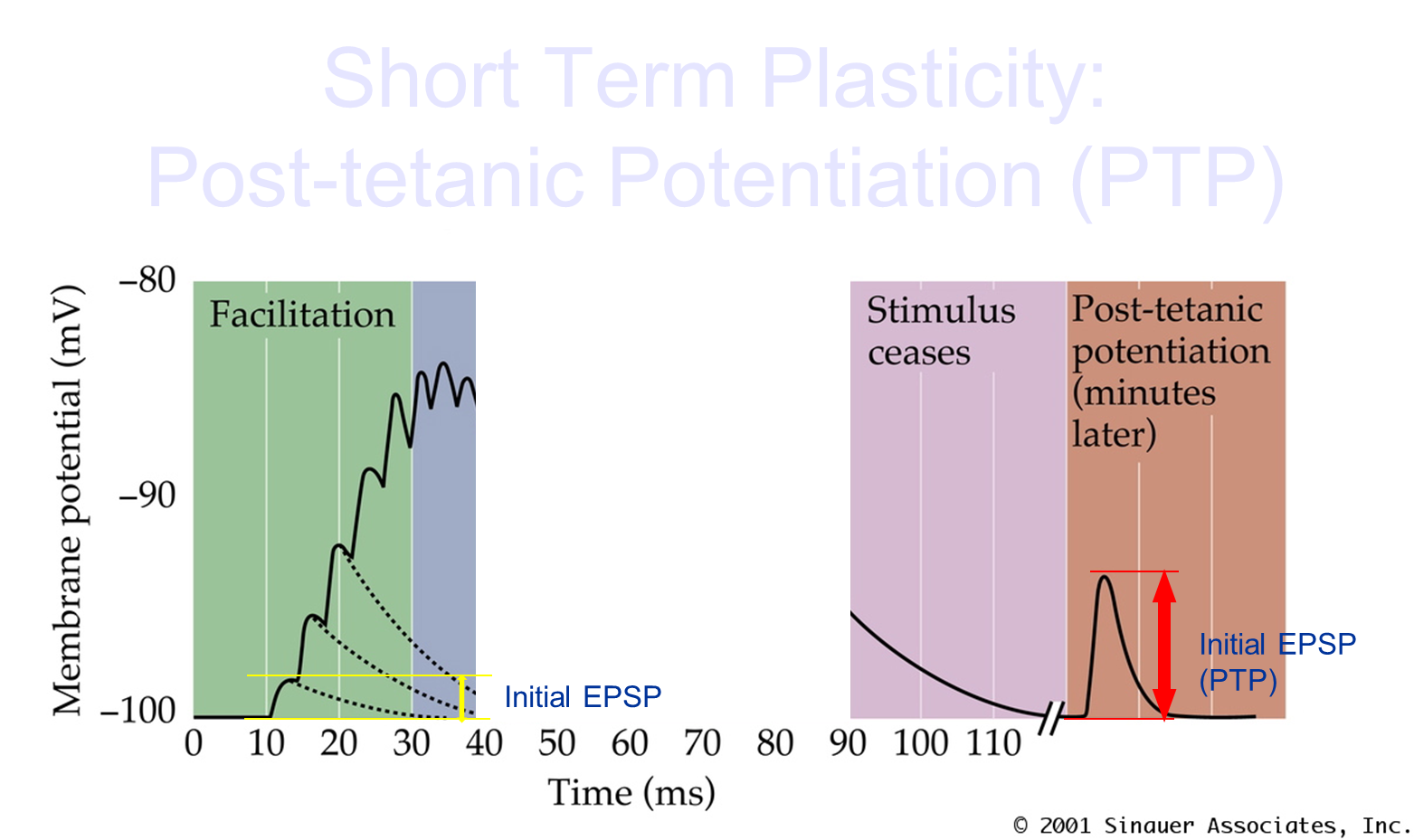
PTP is a form of short-term plasticity where after a high burst of high frequency stimulation the synapse will show enhanced release after tens of seconds to minutes |
→ after a lot of stimulation and a break there is high activity minutes after
1) This occurs due to calcium building up during the burst of stimulation, increasing activity of SNAP proteins and synaptotagmin leading to increased vesicle release
What is Hebb’s Postulate?
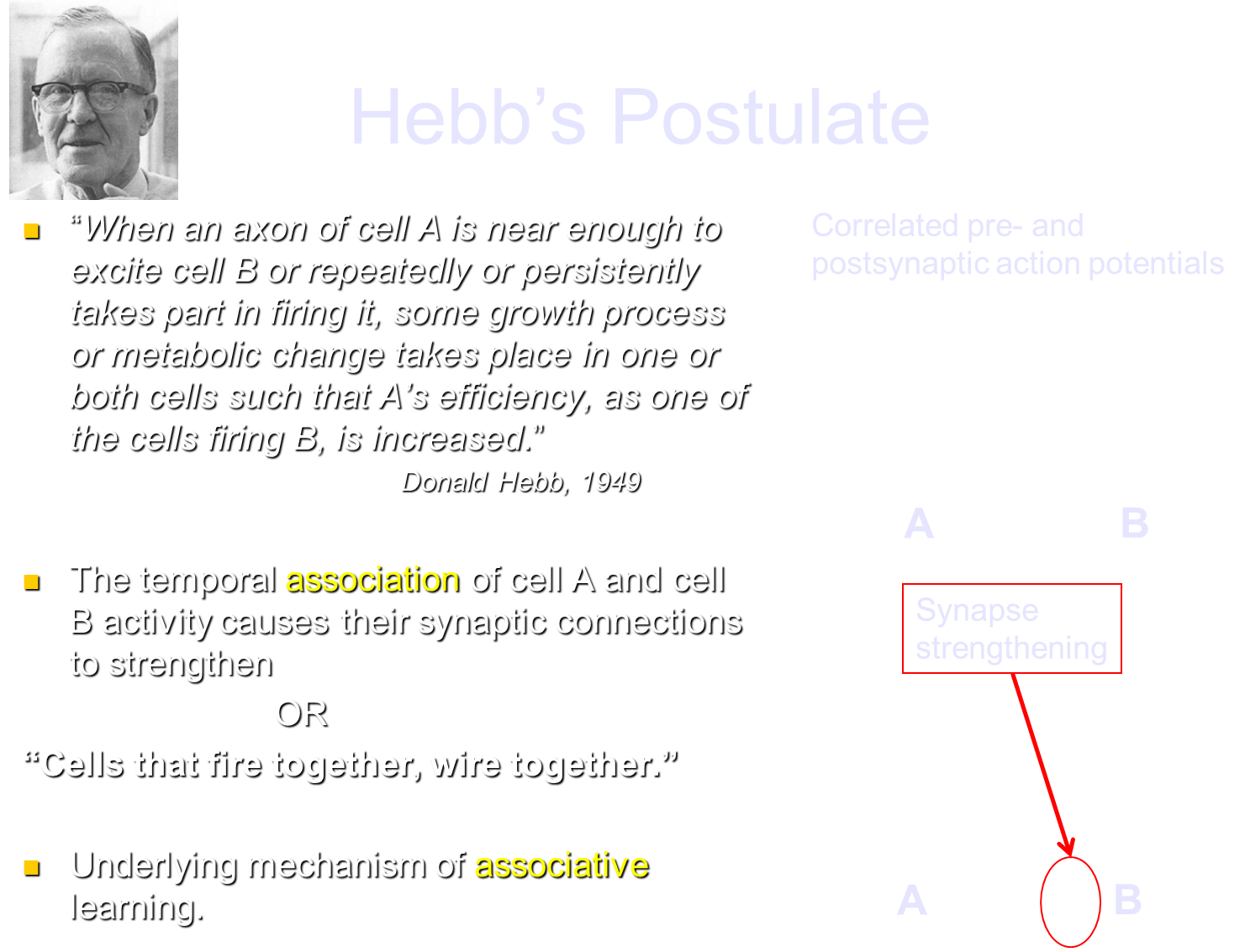
Hebb’s Postulate is the idea that when one neuron helps to fire another neuron often, the connection between them will strengthen
→ if A fires B a lot, the synapse that fires between them gets stronger and is the basic of long-term potentiation and occurs in the hippocampus
What is Associativity?
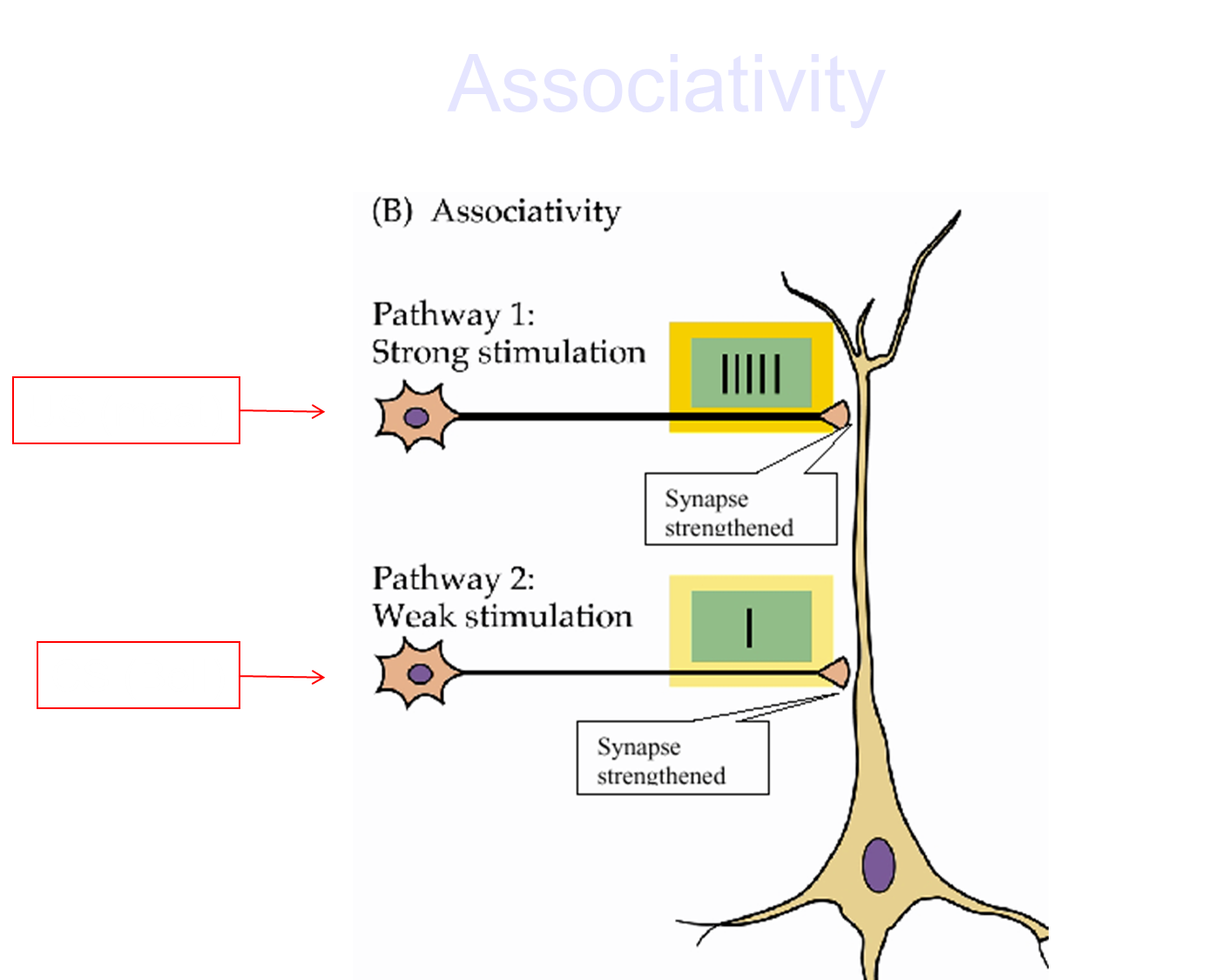
Property of long-term potentiation where two inputs to the same postsynaptic neuron can strengthen if they are activated at the same time
1) The most common example of this is Pavlov’s experiment where a strong input (enough to depolarize neuron and remove NMDA’s Mg block) is associated with a weak input
→ neuron will associate the weak input and strong input when activated together and is the basis of long term potentiation
2) NMDA receptors are necessary for long-term potentiation
How does high frequency firing lead to Long Term Potentiation?
Long Term Potentiation is dependent on the NMDA receptor and high-frequency firing
1) High Frequency firing causes increased uptake of calcium and increased neurotransmitter release
→ this leads to increased post-synaptic response which will remove the magnesium blocking the NMDA receptor
2) this allows glutamate to bind to the NMDA receptor leading to long term potentiation
→ triggering increased AMPA-R receptors in the post-synaptic membrane
→ calcium into the cell via the NMDA receptors activates CaMKII which phosphorylates AMPA-R and increases activity
→ calcium also activates nuclear transcription factor activating systems that will lead to LTP
What are the three requirements for NMDA receptor activation
1) Post-synaptic depolarization to remove the magnesium blocking the channel
2) Glutamate
3) Glycine acts as a co-transmitter for NMDA receptors
→ makes the receptor more likely to open
What four things block LTP?
1) NMDA blockers
2) Postsynaptic Calcium Blockers/Chelators
3) Postsynaptic hyperpolarization
→ negative environment makes it impossible to kick off magnesium from NMDA
4) Protein Kinase Inhibitors
→ blocks lasting molecular changes in the post-synaptic neuron caused by changes in calcium levels from NMDA